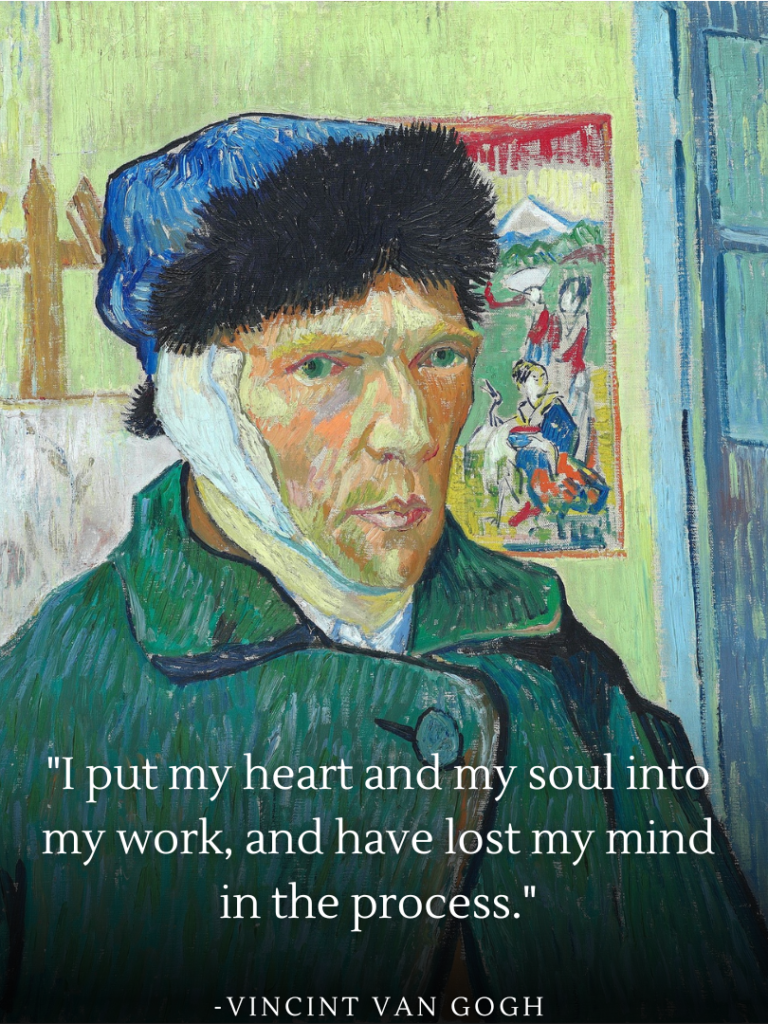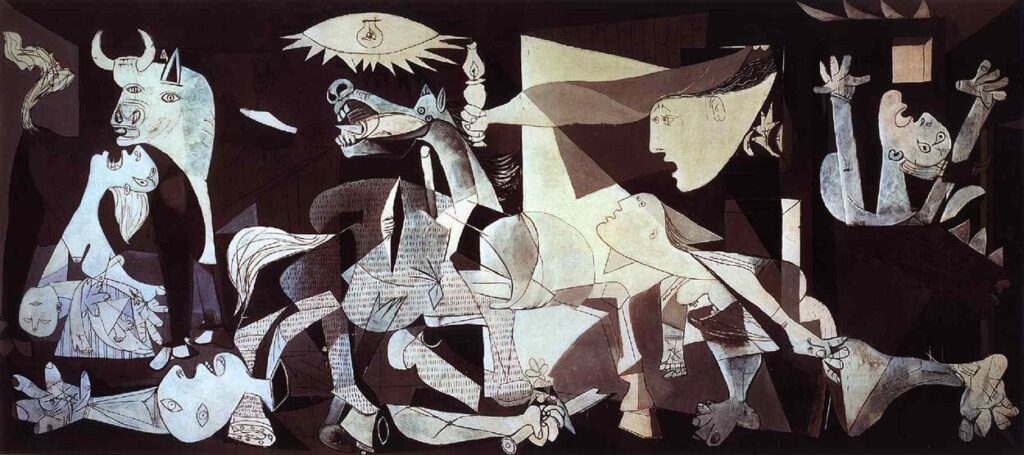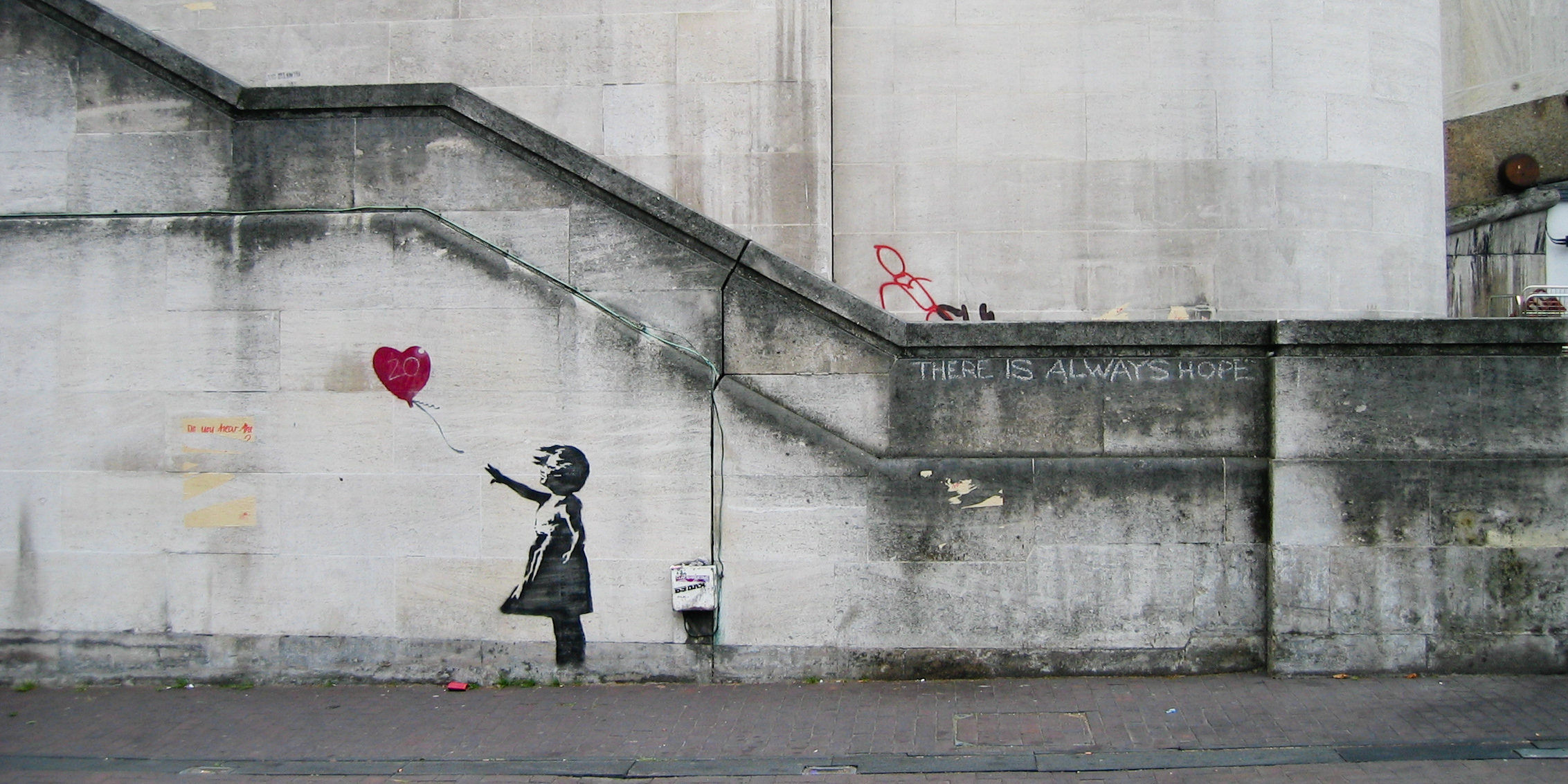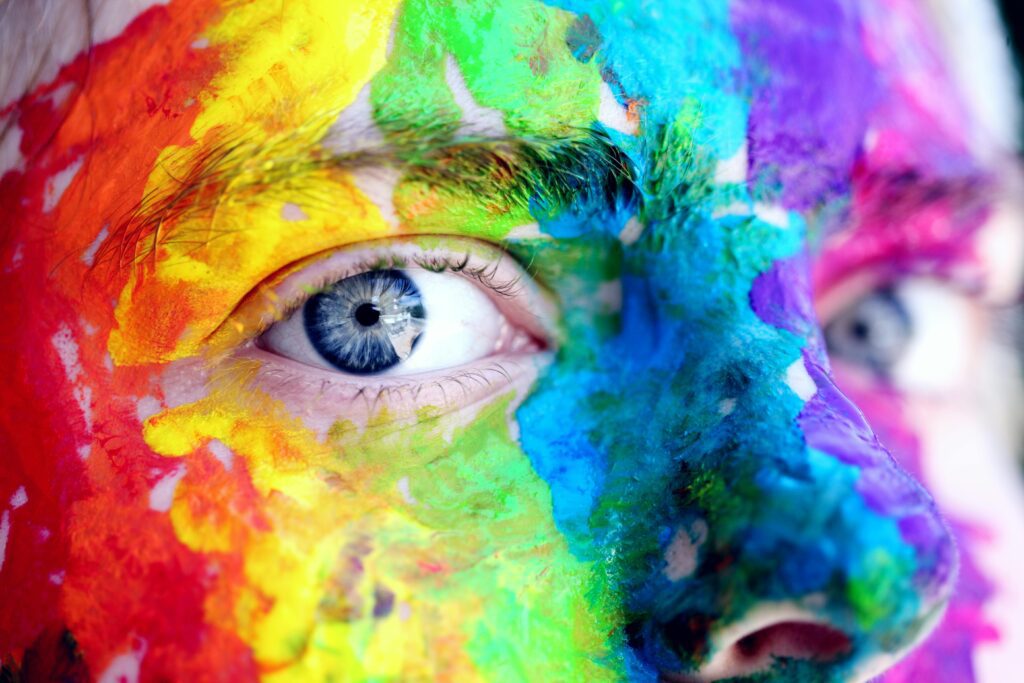“Art enables us to find ourselves and lose ourselves at the same time.”
Thomas Merton
Art has always been a captivating and essential aspect of human life. Whether it’s the vibrant strokes of a painting, the intricate details of a sculpture, or the evocative lyrics of a song, art speaks to us in ways that words alone cannot. This universal curiosity about why artists create art and what fuels their creativity often leads us to wonder about the forces driving their passion.
Why do artists immerse themselves in the process of creation? Is it purely for self-expression, or are there deeper motivations at play? Understanding the reasons behind an artist’s urge to create can offer us a glimpse into the profound connection between art and the human experience.
In this article, we will explore five core reasons why artists create art and delve into what drives their creativity. By examining these motivations, we aim to uncover the diverse and compelling factors that inspire artists to bring their visions to life.
1. Self-Expression
Art serves as a powerful vehicle for self-expression, allowing artists to convey their deepest thoughts, emotions, and identities. For many, creating art is a way to communicate what cannot be put into words, offering a raw and unfiltered glimpse into their inner world.
Consider Frida Kahlo, whose work is renowned for its intense emotional honesty. Her paintings often depict her physical and emotional pain, as well as her identity and experiences. Kahlo once said, “I paint myself because I am so often alone and because I am the subject I know best.” Through her self-portraits, she expressed her suffering and resilience, creating a visual diary of her life’s journey.
Vincent van Gogh is another artist whose work is steeped in self-expression. His vibrant use of color and dynamic brushstrokes reflect his turbulent emotions and mental state. Van Gogh’s famous quote, “I put my heart and my soul into my work, and have lost my mind in the process,” encapsulates how his art was a means of channeling his intense feelings. His masterpiece, “Starry Night,” is often interpreted as a visual representation of his emotional turmoil and longing for peace.

These artists, through their distinctive styles, have shown how art can be a cathartic process, enabling them to explore and express complex aspects of their identities. For many creators, this act of self-expression is not just a form of communication but a vital process of self-discovery and healing. Through their art, they share their unique perspectives with the world, inviting others to connect with and understand their experiences.
2. Communication
Art serves as a profound medium for communication, enabling artists to convey ideas, stories, and messages that resonate deeply with viewers. Unlike spoken or written language, art can transcend barriers and evoke universal emotions, making it a powerful tool for connection and understanding.
One of the most striking examples of art as a means of communication is Pablo Picasso’s “Guernica.” Created in response to the bombing of the Basque town of Guernica during the Spanish Civil War, this monumental painting is a harrowing depiction of the horrors of war. Through its chaotic composition, fragmented forms, and stark monochromatic palette, “Guernica” communicates the brutality and suffering experienced by innocent civilians. Picasso’s work not only captures the immediate aftermath of the bombing but also serves as a timeless anti-war statement that continues to evoke strong reactions and provoke thought.

Another example is the work of American artist Jacob Lawrence, whose “Migration Series” visually narrates the mass movement of African Americans from the rural South to the urban North during the early 20th century. Through his vivid and dynamic panels, Lawrence communicated the hopes, struggles, and resilience of those who sought better opportunities and lives. His art brings to light important historical events and the social conditions that drove this migration, offering viewers a deeper understanding of this pivotal period in American history.
Artworks like these have a profound impact on society and culture. They not only document significant events and social issues but also inspire reflection, dialogue, and action. By communicating powerful messages through their art, artists can influence public opinion, raise awareness, and foster empathy. They give a voice to the marginalized and bring attention to issues that might otherwise be overlooked.
In this way, art becomes a bridge between the personal and the collective, offering a shared space for expression and understanding. It allows artists to engage with the world around them, communicate their perspectives, and ultimately, shape cultural and social consciousness.
3. Emotional Release and Healing
Creating art can be profoundly therapeutic, offering a means of emotional release and healing for many artists. The process of making art allows individuals to express emotions that may be difficult to articulate, providing a safe outlet for processing and managing complex feelings.
Art therapy, a field that harnesses the therapeutic potential of creative expression, has gained recognition for its effectiveness in promoting mental health and well-being. Art therapists guide individuals through the creative process, helping them explore their emotions, resolve conflicts, and achieve personal insights. The act of creating art can reduce stress, improve self-esteem, and enhance emotional resilience.
One notable artist who uses art as a means of healing is Yayoi Kusama. Kusama, known for her immersive installations and distinctive polka dot patterns, has openly discussed how creating art helps her cope with her mental health challenges. She describes her art as a way to “self-obliterate” her anxieties and hallucinations, transforming her inner turmoil into mesmerizing visual experiences. Kusama’s work not only serves as her personal therapy but also invites viewers to engage with her emotional world.
Studies and expert opinions further validate the therapeutic benefits of art. Research published in the American Journal of Public Health highlights the positive effects of art on mental health, noting that engaging in creative activities can decrease symptoms of depression and anxiety, enhance cognitive function, and improve overall quality of life. Dr. Cathy Malchiodi, a prominent art therapist, emphasizes that art-making can be a powerful tool for trauma recovery, offering individuals a way to externalize and process traumatic experiences in a non-verbal, visual format.
Creating art engages the mind, body, and spirit in a holistic manner, fostering a sense of control and accomplishment. The repetitive and meditative nature of certain artistic practices, such as drawing or painting, can induce a state of flow, where individuals become fully absorbed in the creative process, temporarily freeing them from their worries and stresses.
In summary, the therapeutic value of art lies in its ability to facilitate emotional expression and healing. For many artists, the creative process is not just about producing aesthetically pleasing works but also about finding solace, understanding, and recovery through their art.
4. Social and Political Commentary
Artists often create art to comment on social and political issues, using their work as a platform to address and critique societal injustices, provoke thought, and inspire change. Through visual storytelling, artists can highlight issues that demand attention and influence public discourse in powerful ways.
Banksy, the elusive street artist, is renowned for his provocative works that tackle social and political themes. His art often appears overnight in public spaces, instantly capturing the attention of passersby and sparking conversations. One of Banksy’s most famous pieces, “Girl with a Balloon,” subtly yet powerfully conveys themes of hope and loss. Another, “There Is Always Hope,” shows a young girl letting go of a heart-shaped balloon, symbolizing the innocence and dreams that are often crushed by societal failings.

By Dominic Robinson from Bristol, UK – Banksy Girl and Heart Balloon, CC BY-SA 2.0, Link
Banksy’s “Slave Labour” is a stark commentary on child labor and consumerism, depicting a young boy sewing Union Jack bunting. This piece criticizes the exploitation inherent in the production of goods for the developed world. His works are accessible, direct, and impactful, often leading to widespread media coverage and public debate. By bringing art into public spaces, Banksy ensures that his messages reach a broad audience, challenging them to reflect on critical issues.

By Photo by: DeptfordJon Mural by Banksy – https://www.flickr.com/photos/deptfordjon/7205314352/, CC BY 3.0, Link
Similarly, Mexican artist Diego Rivera used his murals to make potent social and political statements. Rivera’s murals, like those in the Detroit Institute of Arts, depict the struggles and triumphs of the working class, celebrating their contributions while critiquing the inequalities they face. His art played a significant role in the Mexican Muralism movement, aiming to educate and inspire the public by bringing art into everyday spaces.
The influence of socially and politically charged art extends beyond visual impact; it shapes public opinion and can lead to tangible change. Art has the unique ability to humanize abstract issues, making them more relatable and urgent. For instance, the AIDS Memorial Quilt, an enormous patchwork quilt made in memory of those who have died of AIDS, brought a deeply personal dimension to the AIDS crisis. This moving artwork raised awareness, fostered empathy, and mobilized support for AIDS research and activism.
Art with strong social and political messages can also challenge authority and question the status quo. Ai Weiwei, a Chinese contemporary artist and activist, uses his art to criticize the Chinese government’s stance on democracy and human rights. His installation “Sunflower Seeds,” composed of millions of handcrafted porcelain seeds, comments on mass production and the loss of individuality in modern society. Ai Weiwei’s work has not only drawn international attention to these issues but has also contributed to the global dialogue on human rights.
In summary, artists use their work as a powerful means of social and political commentary. By addressing pressing issues through their art, they can influence public opinion, raise awareness, and inspire action. Whether through street art, murals, or large-scale installations, these artists engage viewers in meaningful conversations and drive change within society.
5. Pure Passion and Joy
The sheer joy of creating and an unwavering passion for art are fundamental reasons why many artists are driven to produce their work. For these individuals, the act of creating is a source of immense pleasure and fulfillment, providing a sense of purpose and satisfaction that transcends other motivations.
Claude Monet, a pioneer of the Impressionist movement, exemplifies an artist driven by pure passion and joy. His dedication to capturing the fleeting effects of light and color on the natural world was not only a professional pursuit but also a personal obsession. Monet’s famous garden in Giverny, which served as the inspiration for many of his masterpieces, including the iconic “Water Lilies” series, reflects his deep love for nature and his relentless pursuit of beauty. Monet once remarked, “I perhaps owe having become a painter to flowers,” highlighting how his passion for the natural world fueled his artistic endeavors.
Another artist who embodies this pure love for art is Vincent van Gogh. Despite facing numerous personal struggles and receiving little recognition during his lifetime, van Gogh remained deeply committed to his art. His vibrant, emotive works such as “Starry Night” and “Sunflowers” radiate his intense passion for capturing the essence of his surroundings. Van Gogh famously stated, “I am seeking, I am striving, I am in it with all my heart,” illustrating his wholehearted dedication to his craft.
For many artists, the act of creation itself is a joyful and rewarding experience. The process of transforming ideas into tangible forms, experimenting with different techniques, and seeing their vision come to life provides a profound sense of accomplishment and delight. This intrinsic motivation often sustains artists through the challenges and uncertainties of their careers.
Contemporary artist Yayoi Kusama also creates art driven by a deep personal passion. Her immersive installations and signature polka dots are expressions of her inner world, crafted with love and dedication. Kusama has said, “I am just another dot in the world,” reflecting her unique perspective and the joy she finds in creating her distinctive works.
This passion and joy are not only confined to professional artists. Many individuals engage in creative activities purely for the pleasure it brings them, whether through painting, drawing, sculpting, or other forms of art. This universal desire to create for the sake of enjoyment speaks to the fundamental human need for self-expression and the happiness derived from making something beautiful.
In essence, the pure passion and joy of creating are powerful motivators for artists. This love for their craft sustains them, bringing profound satisfaction and fulfillment. Whether through the meticulous brushstrokes of Monet, the vibrant colors of van Gogh, or the whimsical installations of Kusama, these artists remind us of the boundless joy that can be found in the creative process.
Factors Driving Creativity: Environment and Inspiration
Artists’ creativity is profoundly influenced by their environment and sources of inspiration. These factors play a crucial role in shaping their work, providing a rich tapestry of stimuli that fuel their imagination and drive their creative process.
Environment and Surroundings
The environment in which an artist lives and works can significantly impact their creativity. Surroundings can provide a wealth of visual, auditory, and sensory experiences that spark new ideas and artistic expressions. For instance, the vibrant colors of a bustling city, the serene landscapes of the countryside, or the dynamic interplay of light and shadow in a studio can all serve as powerful catalysts for creativity.
Claude Monet’s work is a prime example of how environment influences art. His famous garden in Giverny, with its lush greenery, water lilies, and Japanese bridge, became the centerpiece of his later works. Monet meticulously cultivated his garden to create an endless source of inspiration, resulting in some of his most celebrated pieces, like “Water Lilies” and “The Japanese Bridge.” His immersion in this environment allowed him to observe the subtle changes in light and color, which he captured with remarkable sensitivity.
Similarly, Georgia O’Keeffe drew inspiration from the stark landscapes of New Mexico. The vast desert, with its dramatic cliffs and unique flora, profoundly influenced her iconic paintings of flowers, bones, and abstract forms. O’Keeffe once said, “I found I could say things with color and shapes that I couldn’t say any other way—things I had no words for.” Her environment provided the visual language she needed to express her artistic vision.
Everyday Life and Nature
Everyday life and nature offer endless sources of inspiration for artists. The simple beauty of daily scenes, the complexity of human interactions, and the ever-changing patterns of nature can all ignite the creative spark. Artists often draw from these experiences, transforming the ordinary into the extraordinary through their unique perspectives.
Vincent van Gogh found profound inspiration in the everyday life of rural France. His paintings of wheat fields, cypress trees, and starry nights reflect his deep connection to the natural world and the rhythms of rural life. Van Gogh’s “Starry Night,” with its swirling skies and vibrant colors, captures the awe-inspiring beauty of the night sky, showcasing how nature fueled his creativity.
Similarly, Japanese artist Katsushika Hokusai drew inspiration from the natural world, particularly the majestic Mount Fuji. His series “Thirty-Six Views of Mount Fuji” captures the mountain from various perspectives and under different conditions, reflecting the artist’s deep reverence for nature and its transformative power.
Other Art Forms
Artists often find inspiration in other art forms, whether it be literature, music, theater, or dance. The interplay between different mediums can open new avenues of creative expression, allowing artists to explore and incorporate diverse elements into their work.
For example, Pablo Picasso was deeply influenced by African art and sculpture. This influence is evident in his groundbreaking work “Les Demoiselles d’Avignon,” which features stylized, mask-like faces inspired by African masks. Picasso’s exposure to different art forms and cultures enriched his creative palette, leading to the development of Cubism.
Additionally, Wassily Kandinsky, a pioneer of abstract art, was inspired by music. He believed that visual art could evoke the same emotional responses as music and sought to create compositions that resonated with viewers in a similar way. Kandinsky’s work often features vibrant colors and dynamic forms that he likened to musical compositions, reflecting the profound impact of music on his artistic vision.
In summary, artists draw inspiration from their environment, everyday life, nature, and other art forms. These sources provide a rich and varied tapestry of stimuli that fuel their creativity and drive their artistic process. By immersing themselves in their surroundings and drawing from diverse experiences, artists are able to create works that resonate with and captivate their audiences.
Conclusion
Artists create art for various reasons, each driven by unique motivations and experiences. The five key reasons we explored are self-expression, communication, emotional release and healing, social and political commentary, and pure passion and joy. Each of these motivations highlights the profound connection between art and the human experience, illustrating how art serves as a vital outlet for creativity and expression.
Understanding why artists create art allows us to appreciate the depth and diversity of their work. It helps us see beyond the surface, recognizing the personal, social, and emotional narratives that shape each piece. By appreciating these motivations, we can develop a deeper connection to the art we encounter and the artists who create it.
As we reflect on these reasons, it’s clear that art is not just about creating beautiful objects; it’s about conveying messages, processing emotions, challenging societal norms, and finding joy in the act of creation. These motivations drive artists to push boundaries and explore new horizons, enriching our lives with their innovative and thought-provoking work.
I encourage you to explore your own creative impulses. Whether it’s through painting, writing, music, or any other form of expression, embracing creativity can bring immense joy and fulfillment. Additionally, consider supporting artists in your community. Attend local art shows, purchase original works, and engage with artists’ stories. By doing so, you contribute to a vibrant cultural landscape and help sustain the creative spirit that enriches our world.
In essence, the motivations behind why artists create art are as varied and complex as the art itself. By understanding and appreciating these motivations, we can foster a deeper connection to the art and artists around us, celebrating the diverse ways in which creativity shapes our lives.

